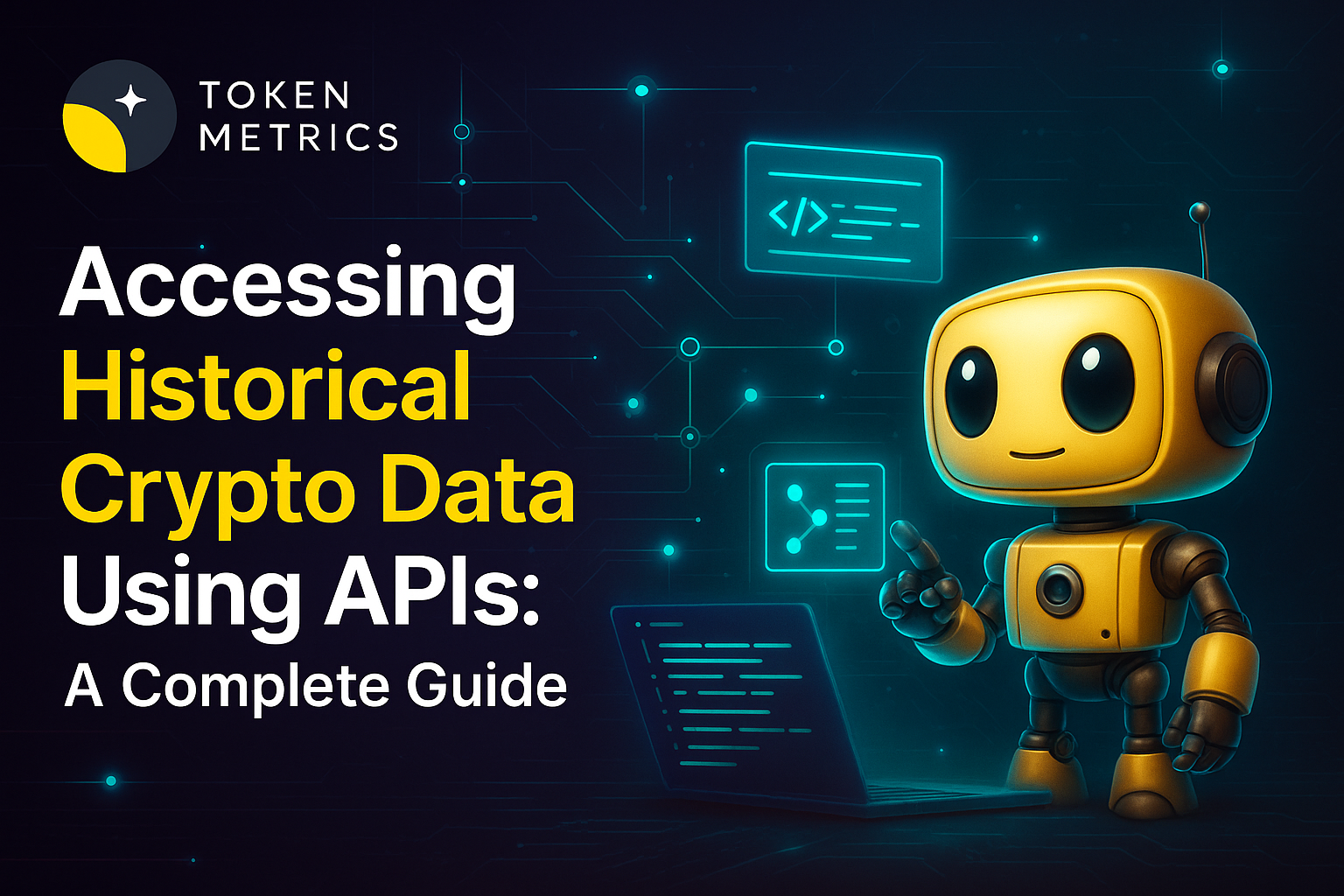Accessing Historical Crypto Data Using APIs: A Complete Guide

Understanding price trends and market dynamics is essential for researchers, developers, and analysts working in the cryptocurrency ecosystem. The demand for actionable, reliable historical crypto data has surged as more professionals seek to power apps, AI agents, and dashboards with accurate blockchain information. But how can you easily access robust historical data—from Bitcoin’s early days to today—using an API?
Why Historical Crypto Data Matters
Historical crypto data serves multiple critical roles in the blockchain and digital asset space. It is the foundation for backtesting trading algorithms, visualizing price trends, and conducting academic or business-driven research on market cycles. Given cryptocurrencies’ rapid global growth, time series data helps users:
- Identify past market regimes and volatility periods
- Study correlations and performance against traditional assets
- Evaluate technology adoption over time
- Build and validate AI models for trend detection
Yet with thousands of coins traded across dozens of exchanges since 2009, acquiring comprehensive, accurate history is challenging without programmatic tools like APIs.
APIs 101: How Crypto Data APIs Work
An Application Programming Interface (API) acts as a bridge, allowing your software to interact with data providers’ servers in real time or on demand. For historical cryptocurrency data, APIs typically offer endpoints for retrieving:
- Daily or intraday OHLC (Open, High, Low, Close) price candles
- Tick-by-tick trade data for specified assets
- Market capitalization, volume, and liquidity history
- On-chain blockchain activity metrics (transaction count, fees, supply)
Data is returned in structured formats like JSON or CSV, ideal for integration with research notebooks, dashboards, and machine learning pipelines. API providers may cover dozens or hundreds of exchanges, aggregate data, or focus on specific subsets of assets.
Choosing the Right Crypto Data API
With a crowded crypto data landscape, selecting the best API depends on your use case and quality requirements. Consider evaluating providers by:
- Coverage: Which coins, tokens, and exchanges are included? Do you need spot or derivatives data?
- Granularity & History: Does the API deliver tick-level trades, minute bars, or only daily snapshots? How far back does the data go?
- Reliability: Is the data validated and aggregated from trustworthy sources? What is the uptime of the API?
- Pricing & Limits: Are there free tiers, rate limits, or tiered plans that support your data needs?
- Special Features: Does the API include on-chain data, AI-assisted signals, or example code?
Token Metrics and a few other advanced platforms provide comprehensive coverage alongside AI-driven analytics that can integrate seamlessly with research or engineering workflows.
How to Fetch and Use Historical Data via an API
Fetching crypto history using an API typically involves several common steps:
- Sign up with a data provider to obtain your API key
- Review API documentation to find relevant endpoints (e.g.,
/historical/prices) - Send HTTP GET requests (using Python, JavaScript, etc.) with parameters such as asset symbol, time range, and granularity
- Parse JSON or CSV responses into your application for visualization or analysis
- Respect API rate limits and terms of use
For example, you can retrieve daily Bitcoin OHLC data from a well-documented endpoint and use it in pandas to build price charts, calculate volatility, or feed into a machine learning model. Programmatic access ensures you can automate research, power trading dashboards, or compare assets historically without manual downloads or spreadsheet wrangling.
Leveraging AI and API Tools for Crypto Analysis
Combining robust historical data APIs with AI-powered analytics unlocks new potential for crypto research. Platforms like Token Metrics utilize large datasets not just for presenting history, but for generating intelligence: pattern recognition, trading signals, anomaly detection, and fundamental scoring. By integrating API live feeds with AI models, you can:
- Detect market regime shifts in real time
- Build custom alerting and signal-generation bots
- Enrich dashboards with sentiment, on-chain, and social indicators
- Support research with up-to-date and historical context
This workflow ensures analysts, quant researchers, and builders can move from raw blockchain data to actionable insights efficiently, while focusing on accuracy and reproducibility.
Build Smarter Crypto Apps & AI Agents with Token Metrics
Token Metrics provides real-time prices, trading signals, and on-chain insights all from one powerful API. Grab a Free API Key
Frequently Asked Questions
What types of historical crypto data can I access with an API?
APIs give you programmatic access to a variety of historical data: price OHLCV (Open, High, Low, Close, Volume), order book snapshots, tick-by-tick trades, market capitalization, on-chain metrics, and more. The granularity and range depend on the specific API provider.
Are there free APIs for historical cryptocurrency data?
Yes, several APIs (including entry-level tiers from advanced providers) offer free endpoints for historical prices and market data. However, free plans may limit data granularity, history depth, or request frequency compared to paid subscriptions.
How far back do most crypto APIs provide historical data?
APIs vary: Bitcoin data typically goes back to 2010, while Ethereum and other major coins cover several years. Full coverage for all coins and smaller assets may depend on the exchange and the API provider’s archival policies.
Can I use historical crypto data APIs for machine learning or AI models?
Absolutely. Clean, granular API feeds are essential for training, validating, and deploying machine learning models for trend detection, price prediction, and anomaly analysis. Many platforms now deliver AI-ready historical crypto data to streamline these workflows.
What programming languages work best for integrating crypto APIs?
Most APIs return data as JSON or CSV, which can be fetched and handled with Python (using requests or httpx packages), JavaScript/TypeScript, Java, or Go. Providers often supply SDKs and code examples for easy onboarding.
Disclaimer
This blog post is provided for educational and informational purposes only. It does not offer investment advice or endorse any specific assets, services, or platforms. Always conduct independent research and review provider documentation before making technical or business decisions related to APIs and crypto data.
Create Your Free Token Metrics Account

.png)




%201.svg)
%201.svg)


%201.svg)










.svg)




.png)